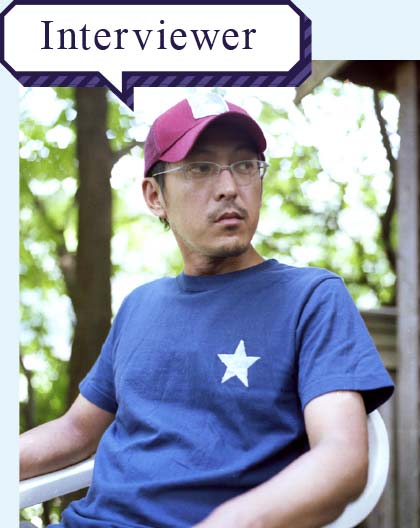- Alumni HOME
- Ten Years on from the Earthquake Their commitment and future

Photography and text by Kiyu Kobayashi
It was ten years since the Great East Japan Earthquake this spring. The university asked me if I would
visit alumni working hard in Tohoku. In mid-May, I took my camera and pen and visited two Toyo alumni
living in Miyagi Prefecture.
One is a senior six years older than me, and one a junior 25 years
younger than me. Both are from different generations, but I felt like we would have a common
understanding, considering that they once took lectures at the Hakusan Campus.
However, honestly, I
also had some concerns.
Pardon the personal matter, but this is actually my second time reporting
under the theme of “Ten Years After Disaster.” I was born and raised in Nagano prefecture, and when I
was a high school student, I experienced the significant tremors of the 1984 West Nagano Earthquake. Ten
years on, I was working as a newspaper journalist in the Kiso region, the region that was most heavily
affected by the earthquake. I visited families who had lost relatives and those who had been affected by
the earthquake and asked them, “How have the last ten years been?” At that time, I became keenly aware
of how little a journalist can understand by coming out of the blue to talk with survivors for a few
hours just because it has been ten years. This caused self-reflection and conflict within me.
The
media tends to separate incidents at five or ten years, but that did not mean that those affected were
living their everyday lives with this in mind. However, there were facts that would not have been
communicated to the public if it were not for the interviews. On this occasion, I went to Tohoku with
the same feelings as that time.
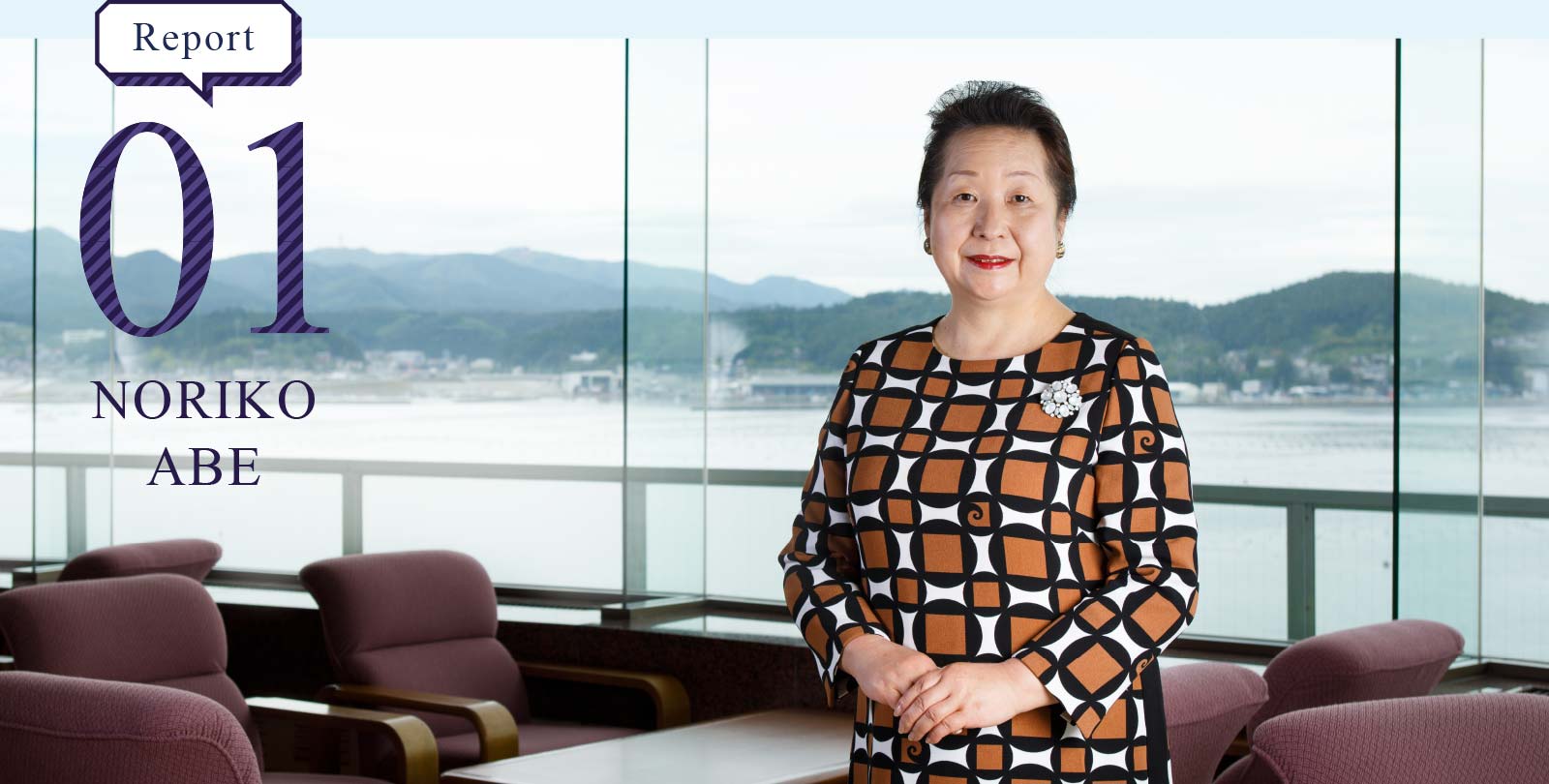
The once-in-a-thousand-year disaster, was an opportunity for once-in-a-thousand-year learning
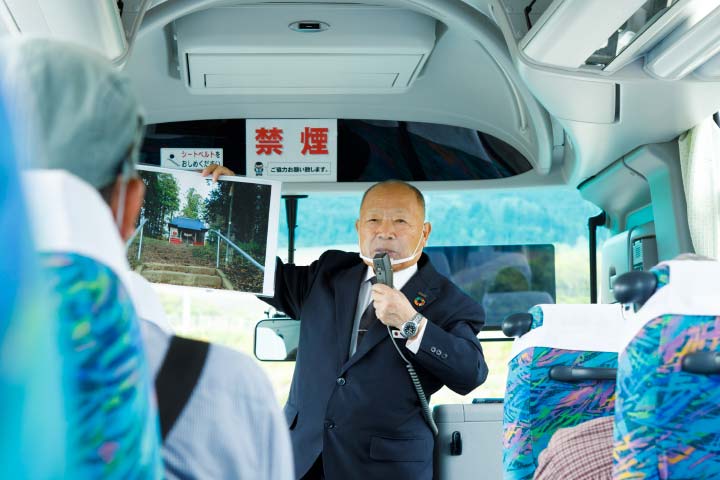
I took the “Storyteller Bus to preserve the memories of the
earthquake”* operated by the Minamisanriku Hotel Kanyo (Minamisanriku Town).
A Middle-aged
man standing with microphone in hand begins to talk mater-of-factly about his experience of the
earthquake.
I could see the elementary school building from the bus window. It was right next
to the sea. This area is said to have suffered significant damage from the tsunami. The bus then
headed for a nearby hill. The sea was now out of sight, and I saw a middle school building, and
adjacent to that an expansive school yard. I thought I would hear about how everyone was saved
here, and I felt a little lighter. However, that was not how the man explained. The tsunami went
past the school yard and almost up the second floor of the school building. Lives were lost.
“The tsunami came up to here...” I was speechless. Ten years on from the earthquake, I had come
into contact with news about the earthquake in newspapers and the media, but it was the first
time I heard directly from someone who had experienced the earthquake. I was left feeling that
for the horror of an earthquake, there are some things that can only be conveyed through the
words of survivors.
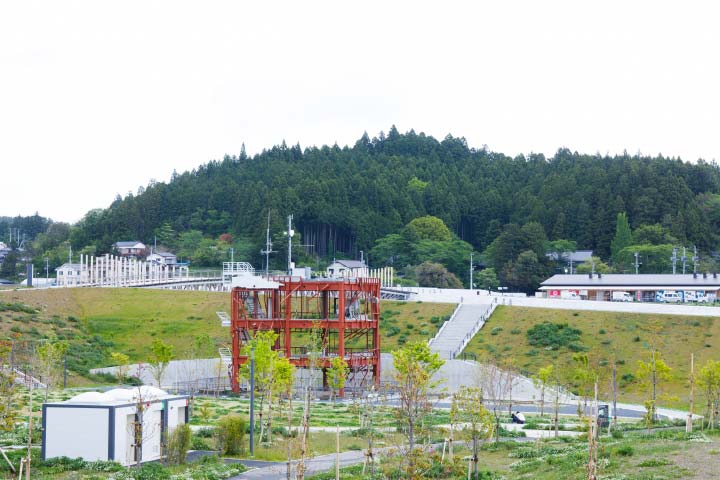
I got off from the Storyteller Bus, and at the fifth-floor lobby of the hotel Ms. Abe told me
what happened at the time of the earthquake. On the other side of a large glass window was a
magnificent view of Minamisanriku. Watching the calm sea, it was hard to believe that a large
tsunami actually hit this area. However, at the time, the hotel must have been packed with
victims of the earthquake.
When the earthquake struck, Ms. Abe was having a meeting at this
fifth-floor lobby. Ms. Abe heard a cracking sound that she had never heard before coming from
the lower floors.
The tsunami reached the second floor, but the upper floors were not
affected. Ms. Abe noted that “The bed rock is hard so there was little damage from the tremors.
Not one product fell of the store shelves.” However, lifeline services were cut off. Ms. Abe had
to make immediate decisions about orders to staff and how to deal with customers. “It wasn’t a
situation where we could sit on our hands.” The most challenging thing was that they had no
water for four months. The information “you can take shelter if you go there” spread around the
area, and a maximum of 600 people took refuge in this hotel. They held regular guest evacuation
training, but the hotel never expected to take in extra evacuees. Ms. Abe recalls, “It was
natural. I just did what I could as a person.”
While listening to Ms. Abe, I felt that her
feelings were connected to the “Storyteller Bus.”
She said that more lives were lost in the
areas further away from the sea than at the coast. “The people living at the coast had
experience from the Chile Earthquake. That horror was passed down from parents to their
children.” As a result, they quickly evacuated to higher ground. One of the reasons why the
“Storyteller Bus” is continuing is that the words of those who experienced the earthquake can
sometimes even save lives.
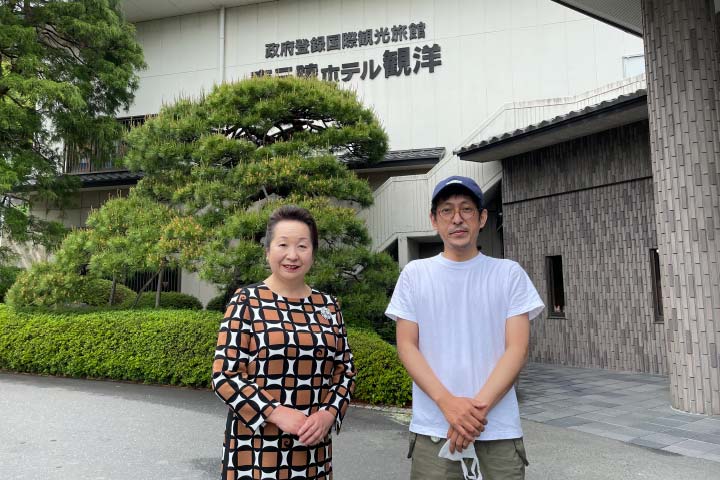
In 2021, an important milestone ten years on from the earthquake, they are facing the new
situation of COVID-19. This hotel is part of the tourism industry, and it has not escaped
impact. Last year, there were constant phone calls from people canceling their reservations at
times. However, one day, the phone suddenly stopped ringing altogether. “There were not even any
reservations to cancel.” However, Ms. Abe says that what they gained from the experience of the
earthquake was “Don’t give up. Come up with ideas.” They are making use of this with COVID-19.
“We will not stop going forward,” Ms. Abe says. As chairperson of the Miyagi Landlady
Association, Ms. Abe worked together with other hoteliers. She proactively pursued the advance
selling of accommodation vouchers, which was highly successful.
Ms. Abe states, “The
once-in-a-thousand-year disaster was an opportunity for once-in-a-thousand-year learning.” They
are making use of this mindset with COVID-19.
*“Storyteller Bus to preserve the memories of the earthquake” operated by the Minamisanriku Hotel
Kanyo. The bus has been in operation since directly after the earthquake to pass on the experiences
of the earthquake. Over 410,000 guests have participated to date.
It won the grand prize at the
Third Japan Tourism Award, rated for its efforts in disaster prevention.
- Noriko Abe
-
- Landlady, Minamisanruki Hotel Kanyo
- Graduated 1983, Hotel Administration Department of Toyo University Junior College
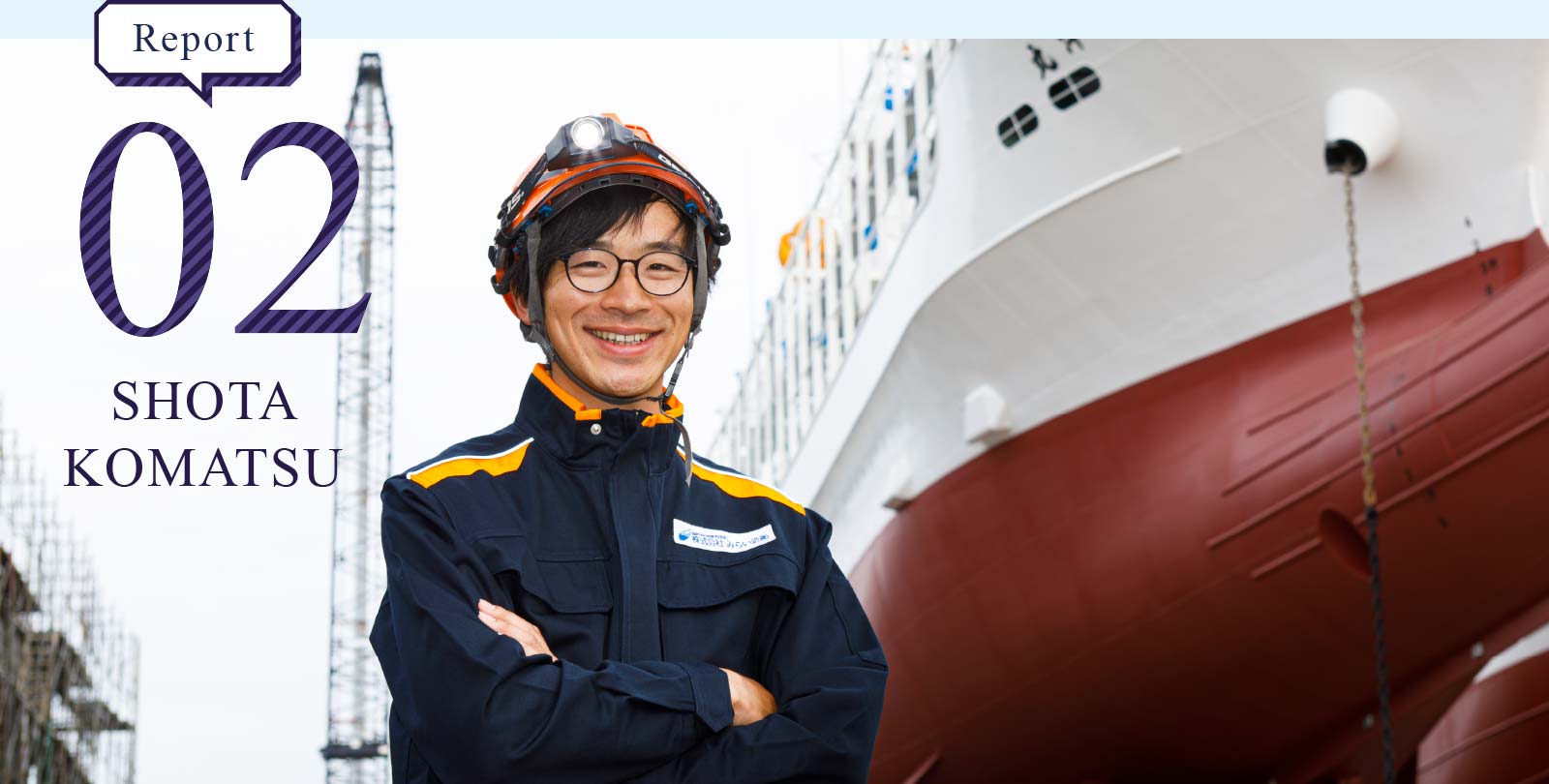
Through working in shipbuilding, I hope I can be of some help to Kesennuma.
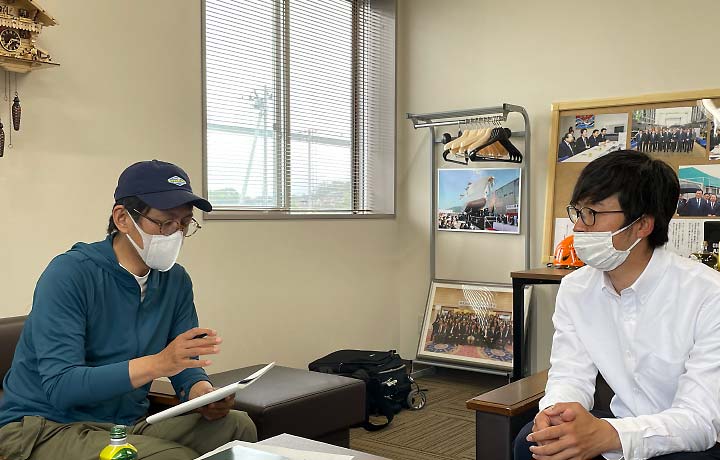
When the large tremors struck, Komatsu was at his family home in Kesennuma, Miyagi Prefecture.
He was in the middle of packing personal belongings he would need in Tokyo into cardboard
boxes.
In April, Komatsu was due to start his dream life as a university student in Tokyo.
However, things didn’t turn out this way.
He wasn’t at the Nippon Budokan for the entrance
ceremony, nor was he present at the Hakusan Campus where the new academic year was starting. At
that time, Komatsu was temporarily staying with relatives in Iwate Prefecture. His family home
in Kesennuma was swept away by the tsunami.
The boxes Komatsu had prepared for moving were
nowhere to be found. Even though Komatsu and his grandparents survived by fleeing to high
ground, looking back on the day it took all he had just to take in what was happening in front
of his eyes.
“I starred at my house as it was swept away. At the age of 18, this was shocking
for me.”
Fortunately, all members of Komatsu’s family were safe, but they had lost so much.
“I thought I wouldn’t go to university. I was more preoccupied with my next meal, what would
happen tomorrow, and if my friends were alive.”
It was at that time that I received a call
from the Education Affairs Section. The university staff recalls,
“I kept telling him that
‘we will support you, so don’t give up on university. It is okay to come when you can.’”
However, at first, it seemed that Komatsu was just lost. He became increasingly anxious about
the gap between the situation in front of his eyes and his future. He sometimes broke into tears
while on the phone with the university staff.
When Komatsu appeared at the Hakusan Campus, it
was already the middle of May, when the recruitment of new club members had ended, and the
campus returned to its usual tranquility. All Komatsu had was the bag in his hand, but he had
finally decided to start rowing alone into the urban ocean. He had to cover his living expenses
with part-time work. Thanks to an introduction from the university, he soon got a part-time job
at the university co-op. Komatsu didn’t even have a futon in his one-room apartment, so for a
few days, he slept in his jumper. University staff could not just stand by. Some were so
concerned they considered offering to allow Komatsu to stay at their homes. However, Komatsu
recalls, “Compared to the evacuation site, I was just happy to have my own space.”
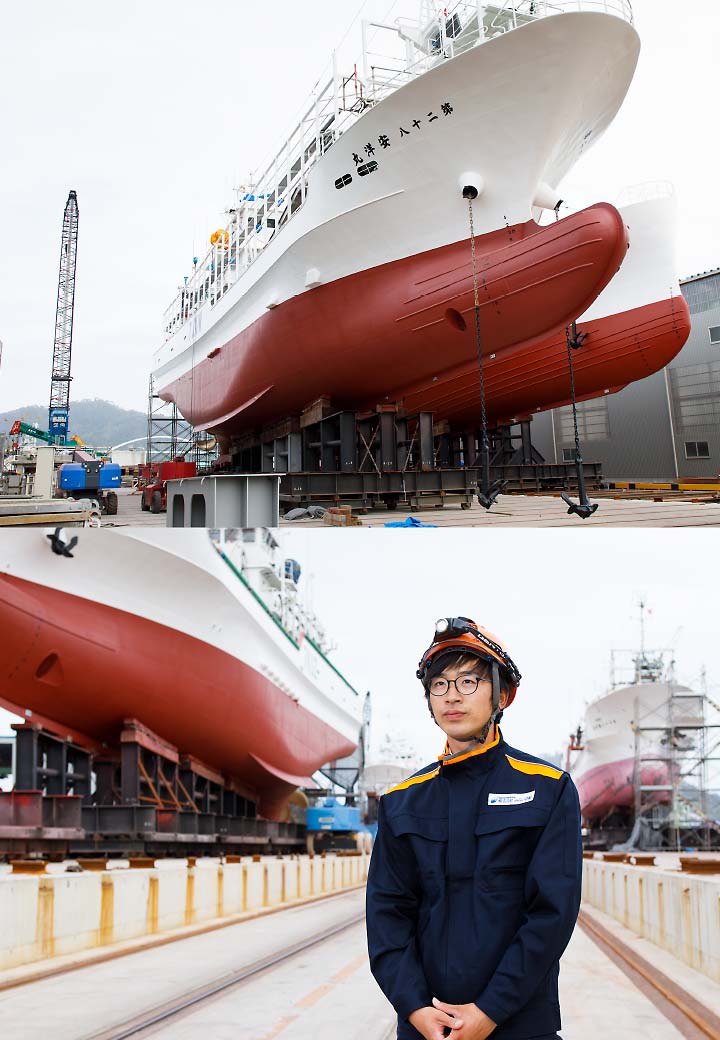
Exactly ten years after in mid-May 2021, I looked out onto the calm sea at Kesennuma with
Komatsu.
Listening to him tell me about his early days coming to Tokyo, I couldn’t help but
think of him at that time as a lonely boat rocking between the waves.
“I have never disliked
the sea. When I watch the sea, I feel calm for some reason.”
Komatsu is currently working at
a shipyard in Kesennuma. He says that the main reason he decided to work in his hometown was
that he wanted to help the recovery efforts. While we walked through the shipyard with its huge
ships, Komatsu told me about the ships he worked on. His proud expression struck me.
“Now I
want to help Kesennuma as much as possible through working in shipbuilding.”
Komatsu’s words
held the conviction of someone who knows what they are doing with their life. At the very least,
he was no longer a lonely boat rocking between the waves.
- Shota Komatsu
-
- Working at Mirai Ships Inc.
- Graduated 2015, Department of Business Law, Faculty of Law
- Kiyu Kobayashi
-
- Photographer
- Graduated 1990, Department of Economics, Faculty of Economics
Born 1968, Chino City, Nagano Prefecture. After graduating from the Toyo University Faculty of Economics in 1990, Kobayashi worked at a newspaper in his hometown. After working as a newspaper journalist, Kobayashi has been working as a photographer since 1998. He has released several publications, including “Tokyo Omnibus.” For the last 15 years, his work has focused on food photography. He has photographed over 10,000 dishes ranging from old-town cuisine to three-star restaurants. Kobayashi is also a fry-pan chef, and this spring, he released “80 Frying Pan Camp Recipes” (Yama-kei Publishers Co., Ltd.), and “All Made With One Frying Pan!” (Natsumesha Co., Ltd.)
Instagram: @frypan_sara
Website:
https://yatsugatake-weekender.localinfo.jp/
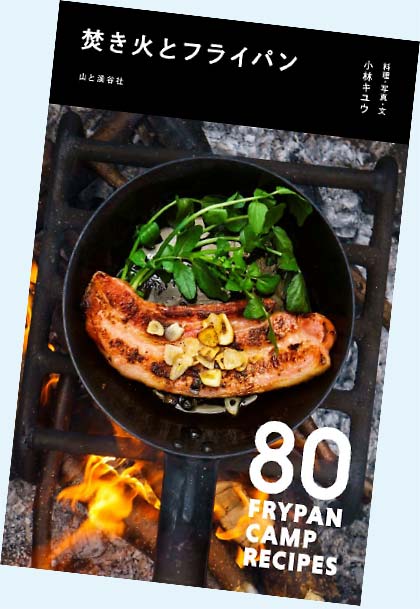
A frying pan cookbook for camping written by an author who was a member of the mountaineering
club in his days as a student.
Features 80 dishes ranging from authentic steak to ramen
and deserts. A must for every campfire-loving camper.
Released June 5, 2021

Regions must be able to change continuously.
We are
creating a system to connect the current Ishinomaki Region to tomorrow.
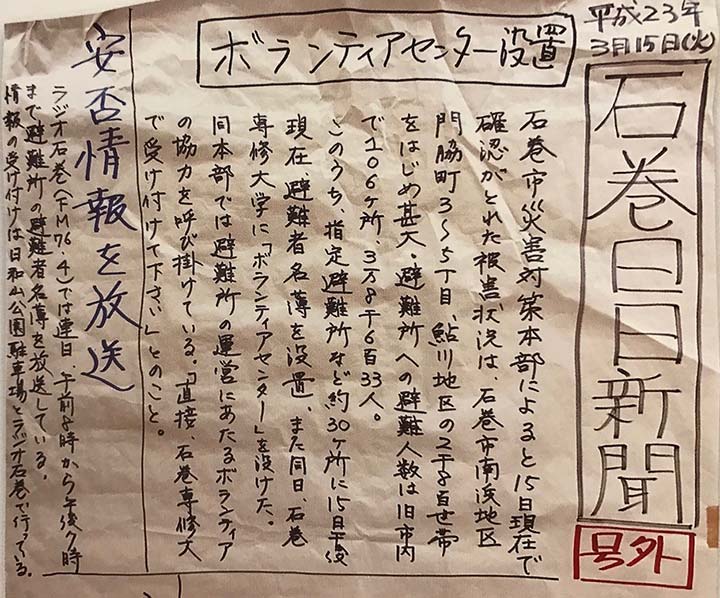
After graduating from Toyo University, I joined a car company. I won a sales award in my first
year and started my own company after just one year of working. After expanding throughout
Japan, I also set up locations overseas, but I encountered terrorist attacks in New York. Having
no choice but to withdraw, I switched my focus from global to local and from pursuing profit to
contributing to the future through regional revitalization.
It was when I was 48. After
setting up the soccer club Cobaltore Onagawa in Onagawa Town, Miyagi Prefecture, I received an
invitation from the Ishinomaki Hibi Shinbun and was appointed finance director. I was assigned
president after rebuilding the company, and the Great East Japan Earthquake stuck just at when
we were felt optimistic about the future.
The town was washed away in the tsunami, and with
the turmoil ever-increasing, we returned our origins as a communications company—the
dissemination of information. We produced a hand-written wall newspaper and posted it at the
evacuation centers. We wrote about what people wanted to read, such as objective facts and
information about rescue teams in large letters so that elderly people would also be able to
read it.
We received a great deal of gratitude, and unexpectedly, we were able to reconfirm
the raison d’etre of a newspaper company, “connecting local information.”
For me, regional
revitalization is thinking about how to connect regions and making this into a sustainable
system.
The operation of Cobaltore Onagawa and the rebuilding of the area around Onagawa
station centered on Seapal-Pier Onagawa are all part of this.
The final goal is for people to
be proactively involved with their hometown and create a situation where people can be vibrant
and continue to be attached to their hometown.
Therefore, we cannot be satisfied with the
status quo, and we need to keep communicating impact.
“Normal life” has been gradually
returning, ten years on from the earthquake. It is not necessarily something negative but, the
possibility of the movement stagnating and the town not maintaining its communicative power
cannot be denied.
As someone who has experienced the rise and fall of companies, the
unchanging everyday routine is the beginning of the end.
The current task is for the people
of the Ishinomaki region to not be satisfied with the status quo even if I am not here and
create a system where the Ishinomaki region can become a dynamically self-propelled region.
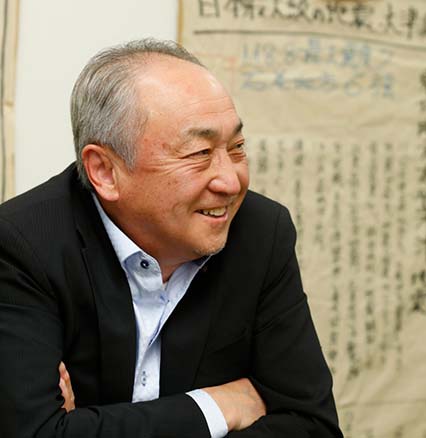
-
Koichi Ohmi
-
President, Ishinomaki Hibishimbun Co., Ltd.
President, Cobaltore Co., Ltd.
1981 Graduate, Department of Sociology, Faculty of Sociology.
We are creating a system to connect the current Ishinomaki Region to tomorrow.

After graduating from Toyo University, I joined a car company. I won a sales award in my first
year and started my own company after just one year of working. After expanding throughout
Japan, I also set up locations overseas, but I encountered terrorist attacks in New York. Having
no choice but to withdraw, I switched my focus from global to local and from pursuing profit to
contributing to the future through regional revitalization.
It was when I was 48. After
setting up the soccer club Cobaltore Onagawa in Onagawa Town, Miyagi Prefecture, I received an
invitation from the Ishinomaki Hibi Shinbun and was appointed finance director. I was assigned
president after rebuilding the company, and the Great East Japan Earthquake stuck just at when
we were felt optimistic about the future.
The town was washed away in the tsunami, and with
the turmoil ever-increasing, we returned our origins as a communications company—the
dissemination of information. We produced a hand-written wall newspaper and posted it at the
evacuation centers. We wrote about what people wanted to read, such as objective facts and
information about rescue teams in large letters so that elderly people would also be able to
read it.
We received a great deal of gratitude, and unexpectedly, we were able to reconfirm
the raison d’etre of a newspaper company, “connecting local information.”
For me, regional
revitalization is thinking about how to connect regions and making this into a sustainable
system.
The operation of Cobaltore Onagawa and the rebuilding of the area around Onagawa
station centered on Seapal-Pier Onagawa are all part of this.
The final goal is for people to
be proactively involved with their hometown and create a situation where people can be vibrant
and continue to be attached to their hometown.
Therefore, we cannot be satisfied with the
status quo, and we need to keep communicating impact.
“Normal life” has been gradually
returning, ten years on from the earthquake. It is not necessarily something negative but, the
possibility of the movement stagnating and the town not maintaining its communicative power
cannot be denied.
As someone who has experienced the rise and fall of companies, the
unchanging everyday routine is the beginning of the end.
The current task is for the people
of the Ishinomaki region to not be satisfied with the status quo even if I am not here and
create a system where the Ishinomaki region can become a dynamically self-propelled region.

- Koichi Ohmi
-
President, Ishinomaki Hibishimbun Co., Ltd.
President, Cobaltore Co., Ltd.
1981 Graduate, Department of Sociology, Faculty of Sociology.
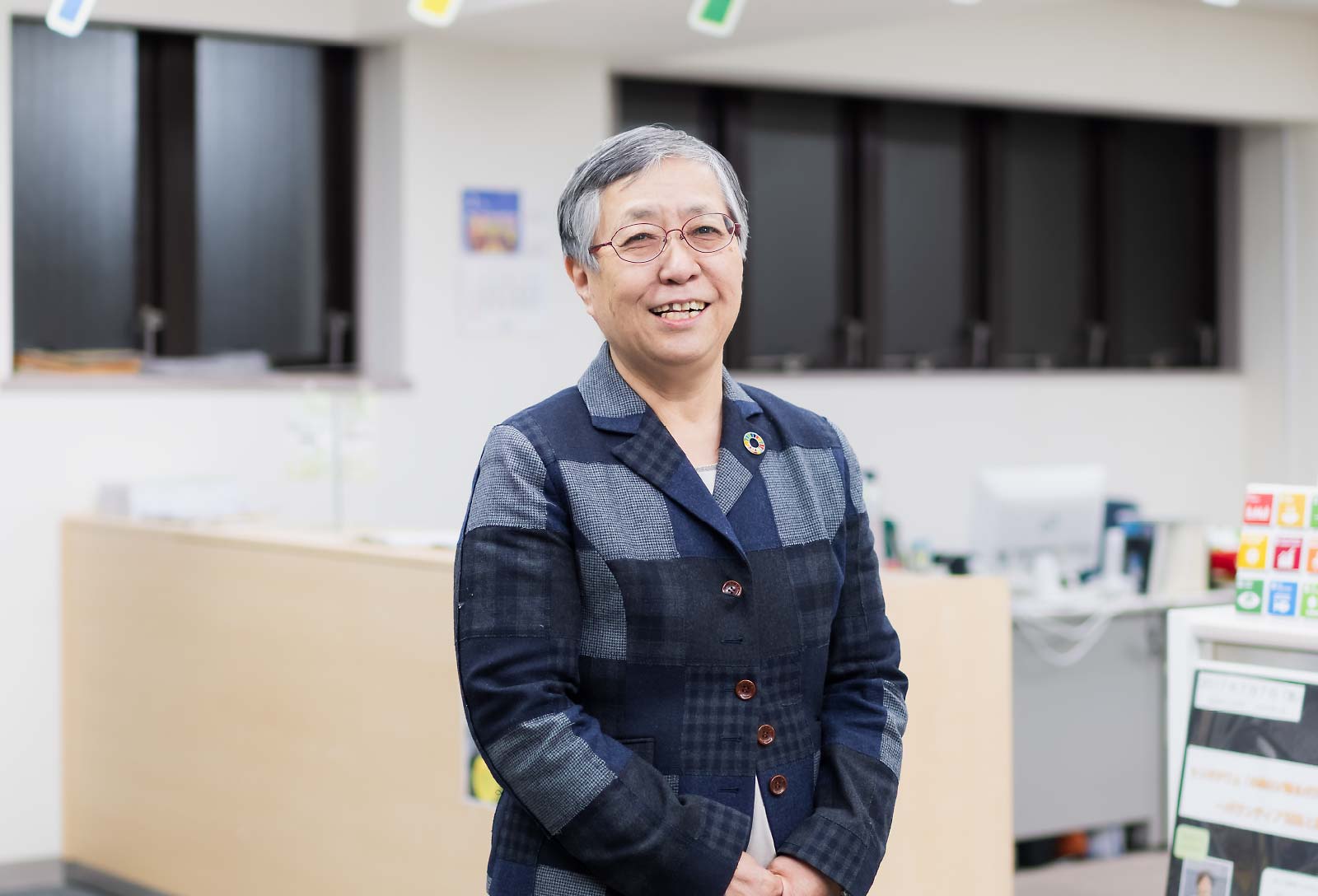
The Great East Japan Earthquake and Toyo University
The
Past and the Future
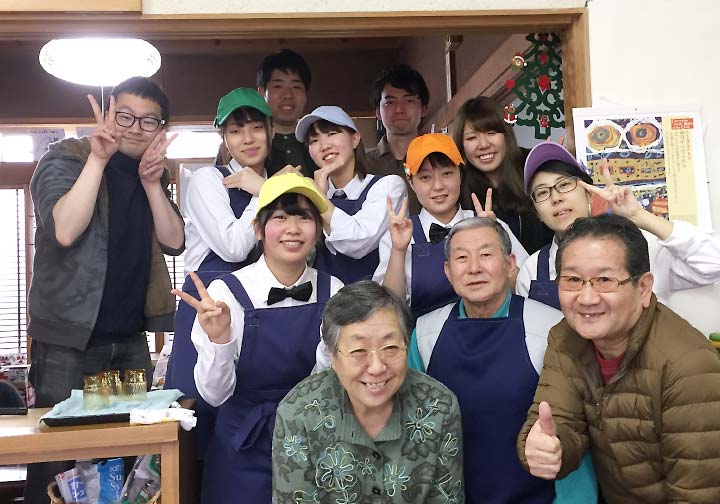
Ten years on from the earthquake. At Toyo University, we provided financial assistance, launched
a task force to utilize the university's knowledge, and have conducted support activities based
on our specialization.
Also, many students, seminars, and student organizations conducted
volunteer activities such as cleanup activities.
I am a specialist in child welfare, so I
have continued to support in various ways, such as starting the “Great East Japan Earthquake
Children’s Support Network” that brings together NPOs and NGOs involved in supporting children
affected by the earthquake.
In Iwate Prefecture, we established and are operating "Yamada
Zonta House," a self-study room for teenagers. Also, In Fukushima Prefecture, we hold "Summer
Respite Days," where we invite children from single-parent families to the Toyo University
seminar house. I was struck by the children opening up by interacting with Toyo University
students.
Students and children affected by the Great East Japan Earthquake in Tohoku on that
day are now starting their new lives at locations throughout Japan. They may be amongst the
people around you, and they may still be suffering. If you meet such a person, do not think that
you should not talk about those harrowing memories. Instead, I would like you to support them
gently. Japan is a country that has many natural disasters. You also may become a disaster
victim. At that time, your experience in supporting someone else will help you stay strong.
- Akemi Morita
-
- Professor, Department of Social Welfare, Faculty of Sociology
- Director of the Center for Social Contribution
- Graduated 1978, Toyo University Graduate School, Graduate School of Sociology
- CONTENTS -
- Alumni HOME
- Toyo University and the Olympic and Paralympic Games
- Toyo University Athletes of the Olympic and Paralympic Games
- Ten Years on from the Earthquake
Their commitment and future - During COVID, Post COVID-19
- A Roundtable Discussion with the President and Vice Presidents
- Into the New Future of the Tourism Industry
- What is Happening to Student-Athletes in during COVID?
- Announcements from Toyo University
